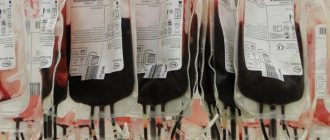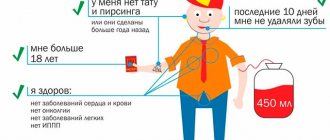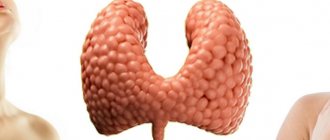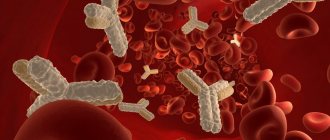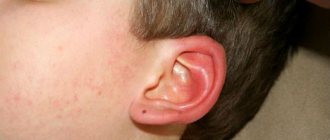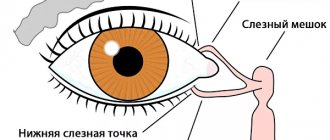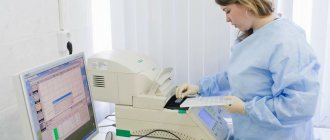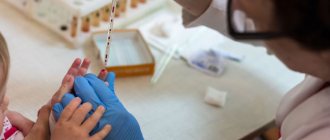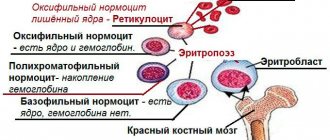Initial appointment with a THERAPIST with 25 years of experience
ONLY 1800 rubles!
(more about prices below)
Immunoglobulin (IG, Ig antibodies) is a type of glycoprotein substance that is found on the outside of B lymphocytes, in tissues and blood, representing water-soluble molecules. Immunoglobulin has a distinctive feature - it can choose which particles it combines with. Those molecules with which this substance binds are called antigens. Immunoglobulin is the most important factor of immunity. The human body uses these antibodies as a tool to identify and neutralize foreign substances, viruses, infections, and bacteria. In addition to the binding function, it also plays an effector role, that is, it causes a certain response of the immune system, launching a complementary scheme of interaction with a foreign substance. Immunoglobulins are synthesized in plasma cells in response to the appearance of an antigen, and for each of the antigens certain plasma cells appear that correspond only to it and are produced by the body specifically for it.
Get tested
If you are in doubt about the choice of laboratory testing, make an appointment with a therapist or consult by phone
+7
Immunoglobulin classes
Classes of immunoglobulins are characteristic not only of humans, but also of all mammals. These antibodies were first discovered by scientists Kitazato and Bering at the end of the 19th century, but the level of development of scientific knowledge at that time did not allow the use of the acquired knowledge. Serious study of the molecular nature of immunoglobulins began only in the forties of the 20th century. To date, the following types of immunoglobulin have been identified:
- Immunoglobulin G (IgG);
- Immunoglobulin M (IgM);
- Immunoglobulin E (IgE);
- Immunoglobulin A (IgA);
- Immunoglobulin D (IgD).
Each type (isotype) of immunoglobulins is conventionally divided into several subtypes; There are nine species and subspecies in total, and in this quantity they are present in all mammals.
Bibliography
- Arnold JN, Wormald MR, Sim RB, et al. The impact of glycosylation on the biological function and structure of human immunoglobulins // Annu Rev Immunol 2007; 25:21.
- Balzar S, Strand M, Rhodes D, Wenzel SE. IgE expression pattern in lung: relation to systemic IgE and asthma phenotypes // J Allergy Clin Immunol 2007; 119:855.
- Bellou A, Kanny G, Fremont S, Moneret-Vautrin DA. Transfer of atopy following bone marrow transplantation // Ann Allergy Asthma Immunol 1997; 78:513.
- Bernstein IL, Li JT, Bernstein DI, et al. Allergy diagnostic testing: an updated practice parameter // Ann Allergy Asthma Immunol 2008; 100:S1.
- Cameron L, Gounni AS, Frenkiel S, et al. S epsilon S mu and S epsilon S gamma switch circles in human nasal mucosa following ex vivo allergen challenge: evidence for direct as well as sequential class switch recombination // J Immunol 2003; 171:3816.
- Coker HA, Durham SR, Gould HJ. Local somatic hypermutation and class switch recombination in the nasal mucosa of allergic rhinitis patients // J Immunol 2003; 171:5602.
- Cooper AM, Hobson PS, Jutton MR, et al. Soluble CD23 controls IgE synthesis and homeostasis in human B cells // J Immunol 2012; 188:3199.
- Dullaers M, De Bruyne R, Ramadani F, et al. The who, where, and when of IgE in allergic airway disease // J Allergy Clin Immunol 2012; 129:635.
- Eckl-Dorna J, Pree I, Reisinger J, et al. The majority of allergen-specific IgE in the blood of allergic patients does not originate from blood-derived B cells or plasma cells // Clin Exp Allergy 2012; 42:1347.
- Egger C, Horak F, Vrtala S, et al. Nasal application of rBet v 1 or non-IgE-reactive T-cell epitope-containing rBet v 1 fragments has different effects on systemic allergen-specific antibody responses // J Allergy Clin Immunol 2010; 126:1312.
- Fregonese L, Patel A, van Schadewijk A, et al. Expression of the high-affinity IgE receptor (FcepsilonRI) is increased in fatal asthma // Am J Respir Crit Care 2004; 169:A297.
- Geha RS, Jabara HH, Brodeur SR. The regulation of immunoglobulin E class-switch recombination // Nat Rev Immunol 2003; 3:721.
- Gergen PJ, Arbes SJ Jr, Calatroni A, et al. Total IgE levels and asthma prevalence in the US population: results from the National Health and Nutrition Examination Survey 2005-2006 // J Allergy Clin Immunol 2009; 124:447.
- Granada M, Wilk JB, Tuzova M, et al. A genome-wide association study of plasma total IgE concentrations in the Framingham Heart Study // J Allergy Clin Immunol 2012; 129:840.
- Hamilton RG, Franklin Adkinson N Jr. In vitro assays for the diagnosis of IgE-mediated disorders // J Allergy Clin Immunol 2004; 114:213.
- Hamilton RG, Williams PB, Specific IgE Testing Task Force of the American Academy of Allergy, Asthma & Immunology, American College of Allergy, Asthma and Immunology. Human IgE antibody serology: a primer for the practicing North American allergist/immunologist // J Allergy Clin Immunol 2010; 126:33.
- Hamilton RG. Accuracy of US Food and Drug Administration-cleared IgE antibody assays in the presence of anti-IgE (omalizumab) // J Allergy Clin Immunol 2006; 117:759.
- Hibbert RG, Teriete P, Grundy GJ, et al. The structure of human CD23 and its interactions with IgE and CD21 // J Exp Med 2005; 202:751.
- Holgate S, Casale T, Wenzel S, et al. The anti-inflammatory effects of omalizumab confirm the central role of IgE in allergic inflammation // J Allergy Clin Immunol 2005; 115:459.
- Kamemura N, Tada H, Shimojo N, et al. Intrauterine sensitization of allergen-specific IgE analyzed by a highly sensitive new allergen microarray // J Allergy Clin Immunol 2012; 130:113.
- Lynch NR, Hagel IA, Palenque ME, et al. Relationship between helminthic infection and IgE response in atopic and nonatopic children in a tropical environment // J Allergy Clin Immunol 1998; 101:217.
- Martins TB, Bandhauer ME, Bunker AM, et al. New childhood and adult reference intervals for total IgE // J Allergy Clin Immunol 2014; 133:589.
- McSharry C, Xia Y, Holland CV, Kennedy MW. Natural immunity to Ascaris lumbricoides associated with immunoglobulin E antibody to ABA-1 allergen and inflammation indicators in children // Infect Immun 1999; 67:484.
- Moffatt MF, Gut IG, Demenais F, et al. A large-scale, consortium-based genomewide association study of asthma // N Engl J Med 2010; 363:1211.
- Niederberger V, Ring J, Rakoski J, et al. Antigens drive memory IgE responses in human allergy via the nasal mucosa // Int Arch Allergy Immunol 2007; 142:133.
- Oettgen HC, Geha RS. IgE regulation and roles in asthma pathogenesis // J Allergy Clin Immunol 2001; 107:429.
- Pien GC, Orange JS. Evaluation and clinical interpretation of hypergammaglobulinemia E: differentiating atopy from immunodeficiency // Ann Allergy Asthma Immunol 2008; 100:392.
- Poole JA, Meng J, Reff M, et al. Anti-CD23 monoclonal antibody, lumiliximab, inhibited allergen-induced responses in antigen-presenting cells and T cells from atopic subjects // J Allergy Clin Immunol 2005; 116:780.
- Schroeder HW Jr, Cavacini L. Structure and function of immunoglobulins // J Allergy Clin Immunol 2010; 125:S41.
- Selb R, Eckl-Dorna J, Twaroch TE, et al. Critical and direct involvement of the CD23 stalk region in IgE binding // J Allergy Clin Immunol 2017; 139:281.
- Shade KT, Platzer B, Washburn N, et al. A single glycan on IgE is indispensable for initiation of anaphylaxis // J Exp Med 2015; 212:457.
- Stone KD, Prussin C, Metcalfe DD. IgE, mast cells, basophils, and eosinophils // J Allergy Clin Immunol 2010; 125:S73.
- Takhar P, Corrigan CJ, Smurthwaite L, et al. Class switch recombination to IgE in the bronchial mucosa of atopic and nonatopic patients with asthma // J Allergy Clin Immunol 2007; 119:213.
- Takhar P, Smurthwaite L, Coker HA, et al. Allergen drives class switching to IgE in the nasal mucosa in allergic rhinitis // J Immunol 2005; 174:5024.
- Thorpe SJ, Heath A, Fox B, et al. The 3rd International Standard for serum IgE: international collaborative study to evaluate a candidate preparation // Clin Chem Lab Med 2014; 52:1283.
- Tsicopoulos A, Joseph M. The role of CD23 in allergic disease // Clin Exp Allergy 2000; 30:602.
- Vercelli D. Genetic regulation of IgE responses: Achilles and the tortoise // J Allergy Clin Immunol 2005; 116:60.
- Walker SA, Riches PG, Wild G, et al. Total and allergen-specific IgE in relation to allergic response pattern following bone marrow transplantation // Clin Exp Immunol 1986; 66:633.
- Watanabe N, Katakura K, Kobayashi A, et al. Protective immunity and eosinophilia in IgE-deficient SJA/9 mice infected with Nippostrongylus brasiliensis and Trichinella spiralis // Proc Natl Acad Sci USA 1988; 85:4460.
- Weidinger S, Gieger C, Rodriguez E, et al. Genome-wide scan on total serum IgE levels identifies FCER1A as novel susceptibility locus // PLoS Genet 2008; 4:e1000166.
Immunoglobulin test price
| Service | Price according to Price |
| Immunoglobulin G (IgG) | 400 rub. |
| Immunoglobulin M (IgM) | 400 rub. |
| Immunoglobulin A (IgA) | 400 rub. |
| Immunoglobulin e (Ige) | 500 rub. |
| Immunoelectrophoresis-screening (differentiation of gammopathy: lambda chains, kapa chains of immunoglobulins) | 2200 rub. |
| Immunoelectrophoresis (complex study) with quantitative determination: includes differentiation of gammopathy: lambda chains, kappa chains of immunoglobulins electrophoretically (immunofixation) + quantitative determination Immunoglobulins IgG, IgM, IgA | 46800 rub. |
What is important to know about registering for tests
Do I need to make an appointment: It is better to make an appointment for blood tests and smears to avoid waiting in the treatment room.
Opening hours of the treatment room: Mon - Fri from 8:00 to 12:00
Form of payment: cash, credit cards
Doctor's referral: not required
Minimum patient age: Urinalysis, stool test - any age, blood test - from 10 years
How quickly the results are ready: Average time 1-2 business days. Ready results can be received by email or during a second visit to the clinic
Where can I get a blood test for immunoglobulin inexpensively and quickly?
Today, many medical institutions in St. Petersburg invite you to take an immunoglobulin test, but not every clinic can boast of the efficiency of conducting the study. If you need a high-quality immunoglobulin examination in a short time, contact the RIORIT medical clinic. A modern diagnostic laboratory is at your service, as well as qualified doctors who will provide comprehensive advice on issues that interest you. You can find out more about prices for immunoglobulin testing, find out about discounts and make an appointment in the treatment room for testing by phone. or at the address of our clinic: St. Petersburg, Kalininsky district, st.
Rustaveli 66G (metro station Grazhdansky Ave. or Devyatkino). MRI and ultrasound center RIORIT
Area:
Kalininsky
Metro:
metro station Grazhdansky Prospekt, metro station Devyatkino, metro station Prospekt Prosveshcheniya
Address:
St. Petersburg, Kalininsky district, st. Rustaveli, 66 lit. G
Telephone:
Equipment:
Siemens, open type
Schedule:
Around the clock
Is rapid testing reliable?
There are the following types of rapid tests : research using immunochromatography, using a set of reagents. In the first case, a person is asked to donate blood at a medical facility. The analysis has advantages:
- low price compared to PCR ;
- high speed (up to half an hour);
- ease of implementation.
However, its accuracy is questionable. Express analysis shows only the presence of components of the virus, and not the virus itself. Therefore, it is important to double-check all positive samples using the PCR .
With express kits (for example, Standard Q Covid-19), a person works himself . This is not an analogue of immunochromatography: blood is not needed here, a swab from the nasopharynx is enough. What exactly needs to be done is written in the instructions.
When the biomaterial comes into contact with the reagent, a coloring reaction occurs (as with pregnancy test This test for coronavirus is quite fast (up to 20 minutes), but not very accurate.
Immunoglobulins A, M, G - what is it?
Immunoglobulins, regardless of which isotype they belong to, are bifunctional substances, that is, they have the following features:
- identify the antigen, determine its nature, and then combine with it;
- are responsible for the destruction of the immune complex, which is formed due to the activation of the mechanisms of effector function.
The three main types of immunoglobulins include:
- Immunoglobulin G.
- Immunoglobulin M.
- Immunoglobulin A.
Immunoglobulin G is the main serum antibody that occurs most frequently and accounts for almost two-thirds of the total immunoglobulin fraction. Immunoglobulin G has high antitoxic activity. It is responsible for the secondary immune response. Class G immunoglobulins are relatively small in size, due to which they can move through the placental protection and affect the immunity of the baby in the womb. Immunoglobulin G includes group F antibodies that have binding ability.
Immunoglobulin M differs from immunoglobulin G class both in its composition and in its effect. Class M immunoglobulins have a primary response to an antigen that they recognize as previously unknown. Immunoglobulins M are quite large and therefore cannot cross the placental barrier. Besides this, they are quite few in number. There are much fewer of them than immunoglobulins G, only about 10%.
Immunoglobulin A makes up about 15% of the total number of immunoglobulins. The main function of this class is to protect the organs of the excretory system, reproductive, mucous, and digestive from diseases and infections. Immunoglobulins A are found in internal secretion fluids such as saliva, milk, and tears.
Immunoglobulins D, E - what is it?
In addition to the two types of immunoglobulins described above, there are two more isotypes of these substances in the human body:
Immunoglobulins D are contained in the membrane substance of some group B lymphocytes. They are quite small in number. Their number is about 1% of the entire fraction of immunoglobulins. To date, the functions of group D immunoglobulins have not been fully studied.
Immunoglobulins E are not present in free form. They bind to other elements and cause the release of inflammatory mediators into the blood. In particular, it is responsible for protecting the body from parasites and various infections. The diagnostic practice of using tests for allergic reactions is based on the use of immunoglobulin E.
Previous NextHow the test is carried out
To detect antibodies, immunochromatographic or enzyme immunoassay is used. The latter method is preferable, as it determines the exact amount of immunoglobulins in the blood.
What does an antibody test determine:
- IgM content - immunoglobulins that appear 5-9 days after the onset of the disease. The rate reaches its peak during the active phase of infection. As the disease progresses, the amount of these antibodies decreases and gradually disappears from the blood.
- The presence of IgG is a protective protein compound that forms before recovery and persists for a long time. Maximum values are observed two weeks after recovery. A high IgG level confirms that a person has had COVID-19.
12 hours before blood sampling, it is recommended not to eat, avoid physical activity, avoid stress and take medications. In addition, the day before the test, you should not drink alcohol, coffee, juices, or tea. It is advisable not to smoke a few hours before the test. Following these simple rules will allow you to obtain the most accurate test result.
In our Medical Center you can take the necessary tests to detect the presence of antibodies to coronavirus.
You can make an appointment by phone: Phone for appointment: +7 (966) 111-13-92
